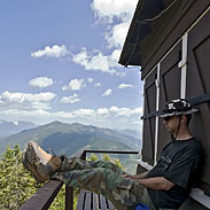Landscape Architecture for Landscape Architects › Forums › GENERAL DISCUSSION › Tell Us Something We Already Didn’t Know
- This topic has 1 reply, 5 voices, and was last updated 11 years, 9 months ago by
 Jason T. Radice.
Jason T. Radice.
-
AuthorPosts
-
September 20, 2012 at 7:53 pm #156334
 landplannerParticipant
landplannerParticipantIt only took AIA nearly four years to confirm what was drastically obvious to most of the rest of us already “on the ground” in all the design professions. For what this kind of dismal monitoring is worth, ASLA and APA have been even more derelict in keeping tabs.
If these few current statistics are to be believed as credible, they substantiate the extent of the damage that was already well-known in anecdotal form ( reported directly and indirectly through other sources e.g. finance/economic/housing blogs/design profession forums) some time ago.
September 20, 2012 at 10:53 pm #156342 Jason T. RadiceParticipant
Jason T. RadiceParticipantI commend the AIA on how they have acknowledged, tracked, reported on, and tried to help with the recession. I think they have done all that they can to keep their members and non-members alike very informed on just what is going on the AEC industry. Every month, they release an easy to follow and accurate set of statistics in the form of the Architectural Billing Index. Not a quarterly survey with a terribly vague and statistically flawed output from said survey that ASLA performs quarterly.
The AIA has addressed the recession from the very start in 2008 and has published articles in its official publications (now Architect magazine) with regards to severity, the effect on different sectors, and some good, often very personal and honest advice on how to cope. You can even get the e-edition of their magazine sent to you for free every month, along with daily and weekly e-mails full of news related to architecture, including economic news. According to Landscape Architect Magazine, the official publication of the ASLA, the recession apparently does not exist. If you ignore it, maybe it will go away. I cannot recall seeing anything about ASLA’s own quarterly survey in LAM, but the non-official free magazine, Landscape Architect and Specifier News, publishes a synopsis of the ASLA quarterly survey the month after it is released.
There also have been lots of seminars at the AIA conventions regarding the subject, much more so than at ASLA, and have held many local events for things like resume building and support sessions.
September 21, 2012 at 6:45 pm #156341 landplannerParticipant
landplannerParticipantJason:
I share your commendation of AIA. I also am personally and professionally aware of the outreach efforts that they extended to their membership and beyond during the first couple of years of this never-ending downturn. I was in the Pacific Northwest at that time. After getting the axe in the third quarter of 2009, I took advantage of the programs that local chapter of AIA had available for, by that time, a large number of unemployed architects and designers. Those programs were very useful and uplifting all at the same time. The expected and typical one to two hour programs on re-positioning yourself and your resume, guerrilla job marketing tactics, supplemental education opportunities to broaden and deepen one’s skill set and so forth. I attended as many of those as I could. That local AIA chapter also established a design professionals job search support group, that I’m sure offered some camaraderie and uplift to the many that were floundering and coming up empty handed for positions (it was extremely slim pickins’ then and we all know the harvest is not much more bountiful now)
By fair comparison, the American Planning Association at least offered a cut in professional dues if you were an unemployed planner. I am also a certified (AICP) planner so that was much appreciated.
Equally fair and highly disappointing comparison with ASLA would include what you have already written. With scant and rare mention and recognition, it as if this “lesser depression” (and that is really what this is….) has been an irritating anomaly to ASLA and not worthy of their coordinated action, let alone attention. There may be a state chapter of ASLA that has made more of an effort to reach out and help their membership on the local level constructively deal with this economic downturn. I am only aware of those on the West Coast, and I can’t recall anything differential they did that comes to mind along these lines.
September 21, 2012 at 11:03 pm #156340 Chris WhittedParticipant
Chris WhittedParticipantNot to white-knight for ASLA or anything, but they did do at least a couple of things to try to help members. There was a dues-relief program for at least a couple of years (not sure how long it lasted) during which they waived annual dues entirely for members facing ‘economic hardship’. They also eliminated fees for posting your resume on the site… if you were a member. Fees for job postings and non-member resumes have remained ridiculously high imho. I also have this hazy recollection of an article here or there, or perhaps an event or two earlier in the downturn that specifically addressed economics and employment issues.
But for the most part I have to agree ASLA has done little to acknowledge or address things. Most of the local chapter events and newsletter articles here were sort of ‘business as usual’ – awards, licensure issues and prep., planting and design, social gatherings, etc. I think the contractor’s association did far more in terms of the kinds of outreach efforts mentioned above. I’ve never really seen a lot of national level involvement at the local level; the state chapters seem to be more on their own beyond funding in terms of how active they are and what they do.
October 5, 2012 at 7:28 pm #156339 Tom CluffParticipant
Tom CluffParticipantI was at a conference a couple of years ago where, in an aside, one of the speakers told a story about how he and a fellow student (back in the 80s) read through every word of every issue of Landscape Architecture Magazine from the 20s and 30s. It turns out that the magazine did not contain a single mention of the Great Depression (or anything related to the depression-era economy, for that matter) until the late 30s (1936, I think).
So, ASLA’s been derelict on this matter before.
October 7, 2012 at 5:57 pm #156338 BoilerplaterParticipant
BoilerplaterParticipantThat’s because they were all working for the WPA, the CCC and the NPS and had nothing to complain about! OK, that’s conjecture on my part, but I recall reading about noted landscape architect Lawrence Halprin’s work designing camps for migrant farm workers as an employee of the WPA. They were simple and low budget, but they were the coolest-looking “camps” I’ve ever seen. That’s why I support these current calls for a new WPA.
Its interesting when you look at the housing stocks of the older major metro areas of the country. Very little at all was built in the ’30s decade. What was built was often done cheaply. Then during the war you had materials shortages with so much going to the war effort. No wonder there was so much pent-up demand by the end of WWII. Now we have a lot of housing sitting empty, and people living with extended family or friends because they can’t afford it or can’t qualify despite historically low interest rates. But I’m sure you’ve all read about the uptick in home sales. I’m rooting for it, but I’m also keeping my fingers crossed.
October 8, 2012 at 1:17 pm #156337 landplannerParticipant
landplannerParticipantBoilerplater:
You could very well be right on that guess. The constructed legacy that unemployed architects, landscape architects, civil engineers and artists designed and had built during the Depression was huge. Many, many examples of that legacy are still with us today, cherished, enjoyed and used by countless numbers of people. One of our greatest investments in “green infrastructure” back when we did not have a “designspeak” name for it.
Not only was Halprin designing WPA work camps but Garrret Eckbo was also doing the same or something close to it for what was then known as the Farm Security Administration.
On a note of great urban/community design and master planning, the classic and highly praised layout of older the core of Boulder City in Nevada was essentially an upgraded workers camp for the thousands who labored over Hoover Dam. Wright and Stein’s master planning of Radburn broke ground just when the Depression hit and never reached full build out because of it. Some of the “greenbelt” government sponsored (can you imagine ?) communities (e.g. Greenbelt Maryland) were also built but most were shelved after it looked like the country was coming out of the Depression (1936). Obviously, it took WWII to finally achieve that.
Although, with the same chance of a snowball staying frozen in hell, one can only favorably speculate on what the merits and lasting achievements would be if even a small fraction of what went into all the various Depression era “jobs” programs were now available during what amounts to this “Lesser Depression” (because that is what we are going through).
October 9, 2012 at 4:05 am #156336 BoilerplaterParticipant
BoilerplaterParticipantI went to Boulder City many times when I lived in the Las Vegas valley and I can vouch for how well done it is. Its also a very comfortable place to walk, which is rare in the valley. Today it is considered to be one of the more desireable places to live in the area. I suppose the fact that they don’t allow gambling within city limits also increases its appeal to some segments of the population.
Also worth mentioning is the new town of Roosevelt, NJ, named for FDR. It was meant to be a garment workers cooperative (Socialism!!! gaah!) and had modest homes in the modernist style. While it was never fully built out and the clothing factory didn’t take off, it is still a desireable place to live now.
October 9, 2012 at 1:02 pm #156335 landplannerParticipant
landplannerParticipantI too have visited Boulder City a few times and completely share your admiration for it.
The layout of its street pattern, adjacent residential character and the period architecture that remain there from the 30’s is remarkably intact. And your also right, it continues to be the one of the more “sought after” places to live in the entire Las Vegas Valley. Nothing contrived, copy-cat, or knock off about it, it was and still is the real deal.
Another Wright and Stein creation that is also remarkably intact and even today, is one of the most highly preferred residential addresses in Los Angeles and named Baldwin Hills Village. Again, it is one of those rare gems, frozen in time, and still highly functioning even today. People who live there, love it and protect its rare qualities with ferocity. No different than what Riverside in Illinois still looks and feels like today. When your there, you really know your in a very special and highly uncommon neighborhood/community.
Well-executed design, of the master-planned community kind, can endure over generations because those generations that have and will live there revere and covet the great memories such places leave with them. It is really that simple, but so exceedingly hard to do.
-
AuthorPosts
- You must be logged in to reply to this topic.

